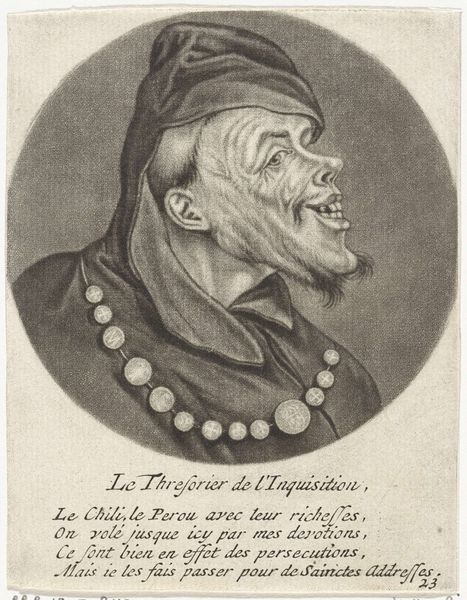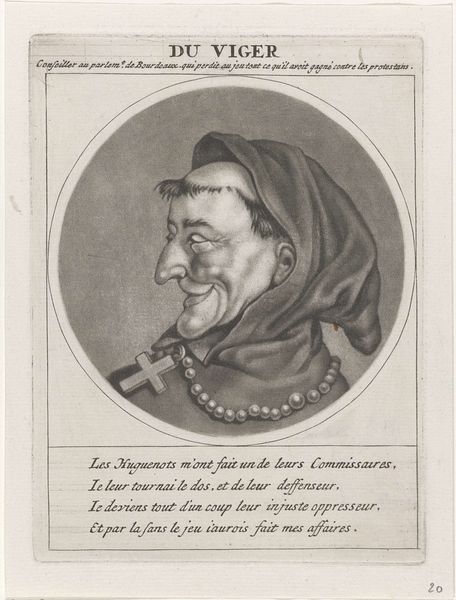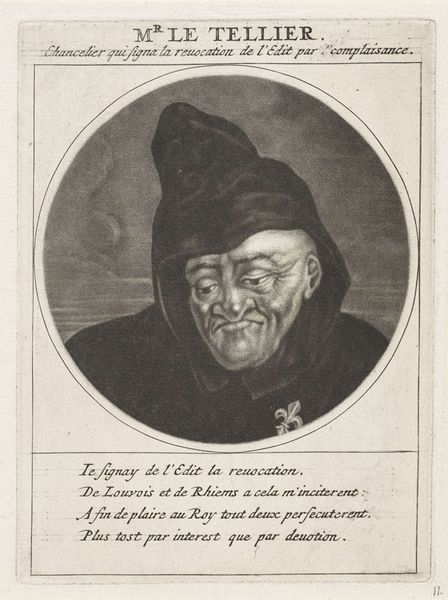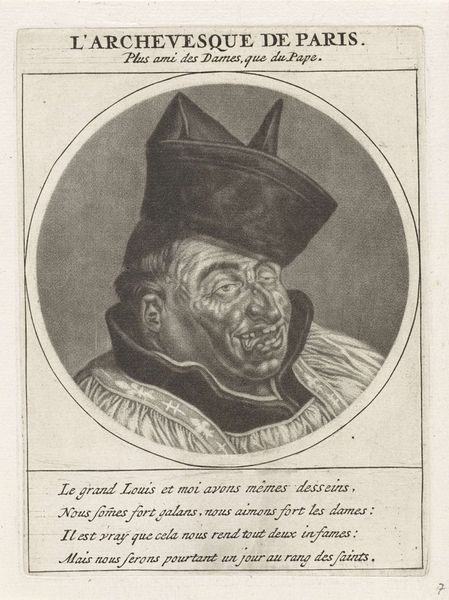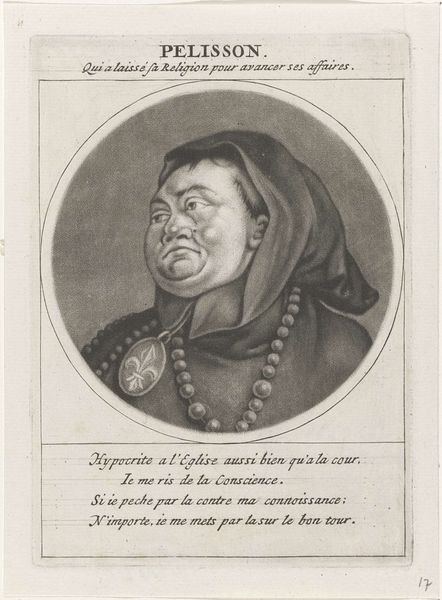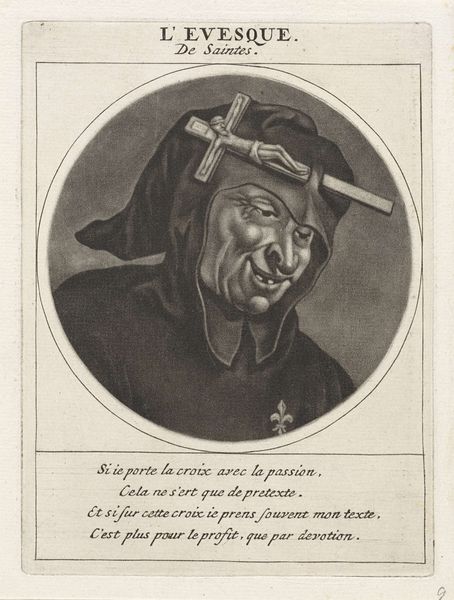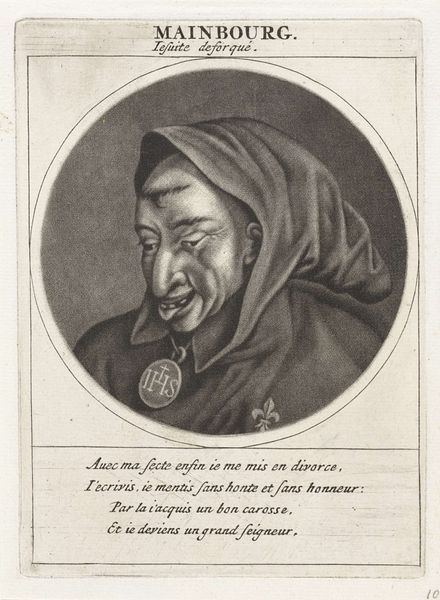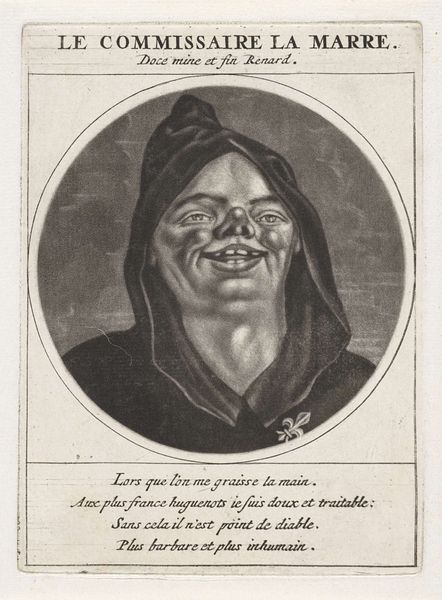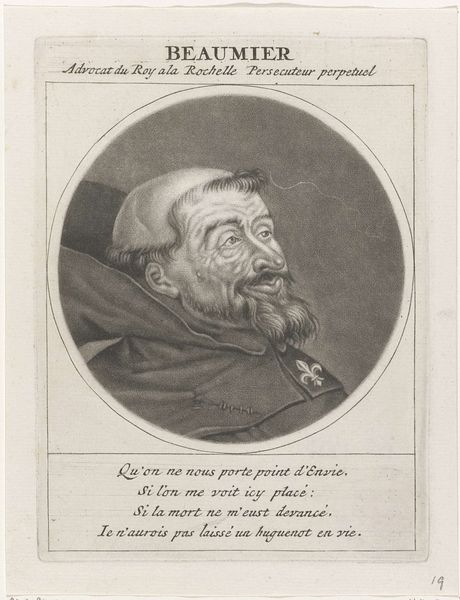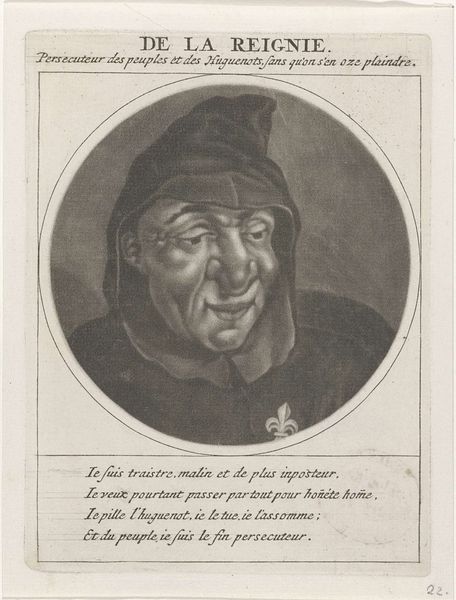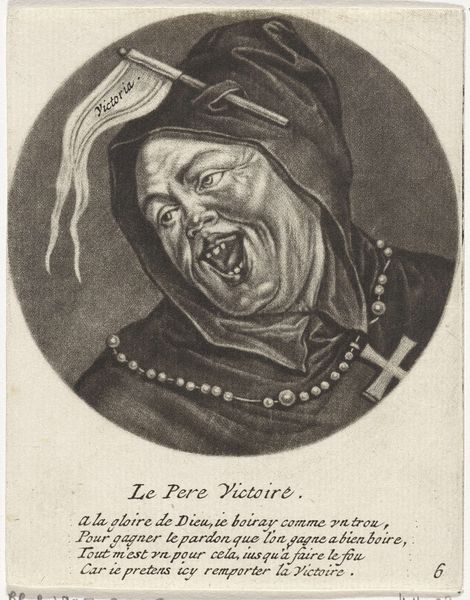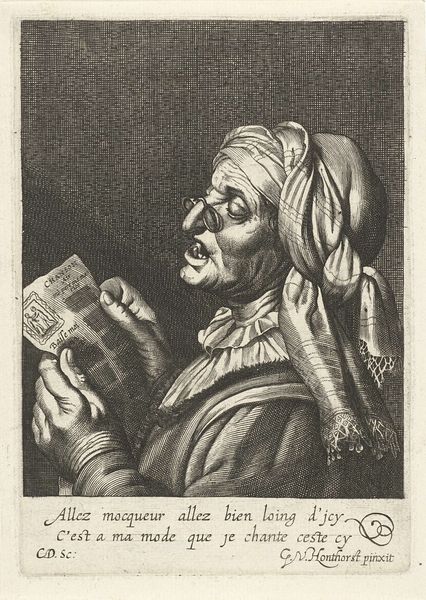
print, engraving
#
portrait
#
pencil drawn
#
baroque
# print
#
caricature
#
pencil sketch
#
old engraving style
#
historical photography
#
portrait reference
#
engraving
Dimensions: height 146 mm, width 107 mm
Copyright: Rijks Museum: Open Domain
Jacob Gole created this mezzotint portrait of Nicolas Le Camus, a civil lieutenant in Paris, sometime between 1660 and 1737. It’s a striking image, less because of the man himself and more because of how he’s presented to us. The exaggerated features and the almost grotesque expression invite us to consider the politics of imagery in 17th- and 18th-century France. The inscription beneath the portrait, which speaks of justice and humanity, adds a layer of irony, given the subject's comical appearance. This was a period marked by rigid social hierarchies and the burgeoning power of the bourgeoisie. Consider the Châtelet, the Parisian court where Le Camus served; it was an institution deeply embedded in the social fabric of the time. Was Gole critiquing the establishment through Le Camus's exaggerated features? To fully understand this, scholars might delve into the archives of the Châtelet, study the social dynamics of the Parisian legal system, and explore the broader tradition of caricature in Dutch and French art. After all, the meaning of this portrait is contingent on its social and institutional context.
Comments
No comments
Be the first to comment and join the conversation on the ultimate creative platform.
